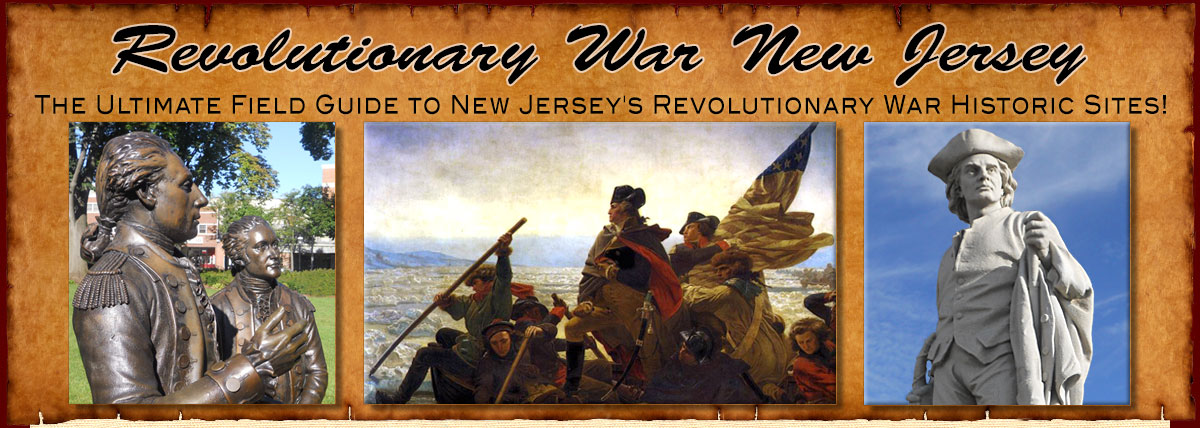

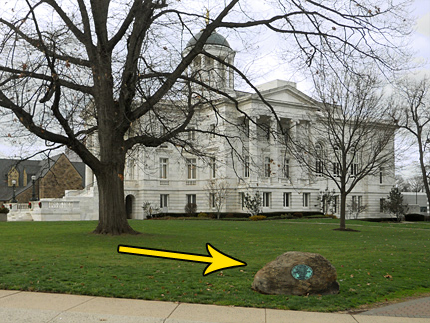
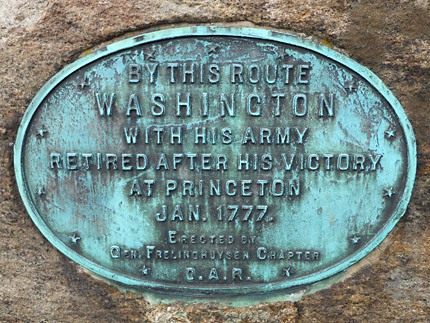
Washington's Route Marker Following their victory at the Battle of Princeton on January 3, 1777, General George Washington and his army went to Morristown for winter quarters, where they arrived on January 6. This marker, which is located on the lawn in front of the Somerset County Courthouse, is the fifth of a series of thirteen showing the route taken by Washington's army from Princeton to Morristown. [1] The other twelve markers in this series can be found in Princeton, Kingston, Griggstown, Bridgewater, Bedminster, Bernardsville, Basking Ridge, Harding Township and Morris Township. For a map tracing the route of all thirteen markers from Princeton to Morristown, click here. This particular monument was unveiled in a ceremony on June 20, 1914. [2]
Main St. and Warren St.
In front of the Somerset County Courthouse
Map / Directions to this Washington Route Marker
Map / Directions to all Somerville Revolutionary War Sites

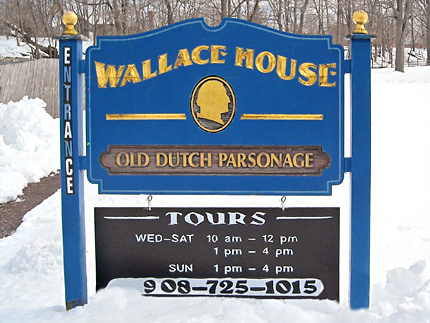
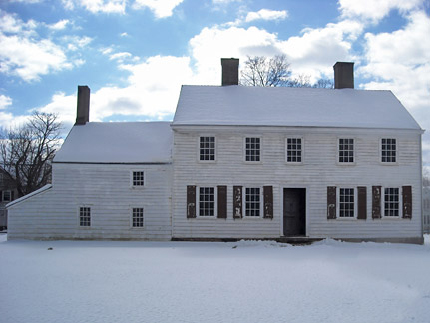
Wallace House
71 Somerset St.
Map / Directions to the Wallace House and Old Dutch Parsonage
Map / Directions to all Somerville Revolutionary War Sites
For current hours and admission information, see the Wallace House and Old Dutch Parsonage Association website
General Washington used the Wallace House as his headquarters from December 11, 1778, to June 3, 1779, during the Second Middlebrook Encampment. [3] However, he left here from December 22 until February 5, to meet with the Continental Congress in Philadelphia. General William Alexander (Lord Stirling) was left in command of the Middlebrook Encampment in Washington's absence. [4] When Washington returned from Philadelphia to the Wallace House, he was accompanied by his wife Martha, who remained with him at the Wallace House for the rest of the encampment.
The house was owned by John Wallace, a retired Philadelphia merchant. It was built in 1776, just two years before the encampment. Wallace called his property "Hope Farm." General Washington and his staff occupied four rooms of the house; the Wallace family continued to live in the rest of the house. [5]
Four other houses which were used as headquarters by American Generals during the time of the second Middlebrook Encampment still stand:
• Jacobus Vanderveer House in Bedminster - Headquarters of General Henry Knox
• Van Horne house in Bridgewater - Headquarters of General William Alexander (Lord Stirling)
• Van Veghten house in Bridgewater - Headquarters of Quartermaster General Nathanael Greene
• Abraham Staats House in South Bound Brook - Headquarters of General von Steuben
The Heritage Trail Association of Somerset County runs a Five Generals Bus Tour in February, which visits all five of these houses.
For more information about this and their other events, see their website https://heritagetrail.org.

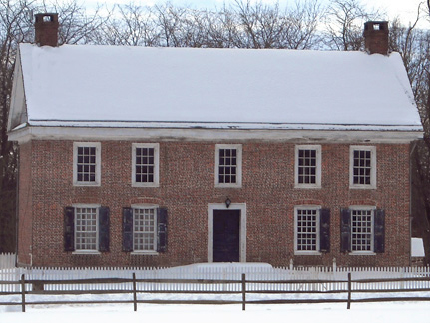
Old Dutch Parsonage
71 Somerset St.
The Old Dutch Parsonage is located behind the Wallace House.
Tours of both buildings start at the Wallace House.
The Old Dutch Parsonage was built in 1751. Its first occupants were Reverend John Frelinghuysen and his family. John's son Frederick, who was born here in 1753, went on to play military and political roles in the Revolutionary War era: he served in the Somerset County Militia, in the Continental Congress in 1779, and in the convention that ratified the United States Constitution for New Jersey in 1787. Frederick Frelinghuysen is buried in the Van Nest Burying Ground in Hillsborough Township.
Reverend John Frelinghuysen died in 1754, and the house was next occupied by the Reverend Mr. Jacob Hardenbergh, who lived here until 1781. Hardenbergh was a supporter of the cause of Independence, and he served in the Provincial Congress of New Jersey. During Washington's stay at the Wallace House, he was occasionally a guest at the Old Dutch Parsonage.
The Old Dutch Parsonage originally stood a few hundred feet from where it stands today. It was moved in 1913 to its current location because of work on the nearby railroad tracks. [6]

1. ^ This marker was erected by the General Frelinghuysen Chapter of the Daughters of the American Revolution.
• For more details and accompanying source notes about the Battle of Princeton and the 1777 Morristown encampment, see the Princeton and Morristown pages of this website.
2. ^ "The Washington Marker at Somerville," Somerset County Historical Quarterly, Volume 3, Number 4, October 1914
Available to be read at the Internet Archive here
3. ^ • George Washington's arrival on December 11 is documented in his December 13 letter to the President of Congress:
"... I did not reach this place till late on the 11th, since which I have been much employed in attending to the dispositions for hutting the army; but, in the mean time, the objects of the despatch have engaged my utmost attention."• George Washington's departure on June 3 is noted in his letter of that day to the President of Congress:
"We shall press forward with all diligence, and do every thing in our power to disappoint the enemy. I expect to set out this day towards the Highlands, by way of Morristown."▸▸Both of these letters are reprinted in:
George Washington; Edited by Jared Sparks The Writings of George Washington Volume VI (Boston: Little, Brown, and Company, 1858) p. 134, and 267-268 Available to be read at Google Books here4. ^ • Washington's leaving for Philadelphia and the passing of command in his absence to Lord Stirling are noted in Washington's letter to Lord Stirling on Monday, December 22, 1778:
"Congress having been pleased to require my attendance in Philadelphia for a few days, the immediate command will devolve upon your Lordship."
▸This letter is reprinted in:
George Washington; John C. Fitzpatrick, Editor, The Writings of George Washington from the Original Manuscript Sources / Volume 13 - October 1, 1778 - January 11, 1779 (Washington D.C.: United States Government Printing Office, 1936) p. 443
Available to be read at the Internet Archive here• For Washington's return to Middlebrook on February 5, 1779, see:
George Washington; John C. Fitzpatrick, Editor, The Writings of George Washington from the Original Manuscript Sources / Volume 14 - January 12, 1779 - May 5, 1779 (Washington D.C.: United States Government Printing Office, 1936) pages 68, 69, and 73
Available to be read at Google Books here5. ^ George Washington's Middlebrook Encampment 1778-1779 brochure (Produced with grants from the New Jersey Historical Commission, a division of the Department of State.)
6. ^ The Old Dutch Parsonage page of the New Jersey Division of Parks and Forestry website